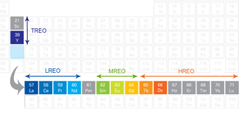Eudialyte and Jewelry
A beautiful, rare red gemstone found largely in the southwestern region of Greenland, eudialyte has many reasons to be considered valuable jewelry by mineralogists. First of all, there’s the natural rarity; then there’s the fact that as an alkaline rock, it is easily dissolved by strong acids (which makes it even rarer, since acids abound in nature); and lastly, the fact that eudialyte doesn’t really hold a crystal form very well – it can crumble with the application of moderate-to-high force, unless alloyed with stronger substances. Used in tandem with the rare earth metal zirconium, eudialyte is often found with a bevy of igneous rocks: albite, aegirine, natrolite and nepheline. In fact, the chemical structure of eudialyte is such that it is an unusually promiscuous mineral: the experts have identified at least 46 different possible chemical configurations that are possible, because of all the sites where rare earth metals can bond.
While the first discovery of eudialyte was centuries ago in Greenland, many of the samples marketed and kept as treasured items today were mined in the Kola Peninsula of Russia, which is known for its many mineral species. Other popular hotbeds of rare and common minerals that harbor minute stores of eudialyte forms are Canada, Norway, Arkansas in America, and the African island of Madagascar. For the prospector looking for this crystal, the most promising samples are dark red, translucent to transparent, with regular intrusions of white, gray and black in the internal crystal structure. This menagerie of colors comes from the many impurities that dominate its patterns, such as the elements Cerium, Sodium, Hydrogen, Silicon, Iron, Manganese, Chlorine and Calcium. While of interest to mineralogists from an academic point of view – measuring properties such as hardness, reflectivity, etc for industry and academia – eudialyte’s structure has caught the eye of consumers and jewelry makers.
Eudialyte is considered to be a stone of the heart – which is understandable, given the deep red color that is so clear in large crystals. Like other gemstones commonly used as birthstones, it has several fanciful proclamations about its mystical benefits:
- Eudialyte is supposed to calm and soothe the heart
- When worn around the neck, it brings harmony by balancing emotions
- It fosters trust between parties
- Enhances vitality
For the burgeoning mineralogist or amateur rock collector, it is instructive to be familiar with some of eudialyte’s physical characteristics.
- As mentioned, the color is some expression of red, plum, pink-striated purple, blue when mined from some regions with a particular rare earth impurity, and even brownish yellow. This range of colors is due to its appetite for finding rare earth partners.
- Crystals of eudialyte tend to be near-transparent and outright translucent, exposing the deep gray-white pattern beneath the surface.
- It doesn’t form crystals readily, and therefore has an uneven fracture. In nature, eudialyte is often found as grains embedded in other igneous rocks. In fact, these embedded grains have a so-called sub-crystal state of a distorted rhombohedral crystal.
- The crystal system classification is that of a trigonal, with bar 32/m.
- The crystal cleavage is basal, which means it is poor in one direction.
- The Moh’s hardness is 5-5.5, which is soft, but not that soft.
- It has a specific gravity of 2.9 on average.
- Generally, the crystals found are fractured and brittle
- The associated minerals are nepheline, aegirine, calcite, quartz, various feldspars, natrolite, and albite. Along with the color, absent crystal habit and relative softness, associations with these minerals are some of the best ways to discern eudialyte in the field without extensive chemical analysis.
- Lastly, the places of occurrence have thus far been found to be Greenland, Russia, the USA, Canada, Madagascar and Norway.

